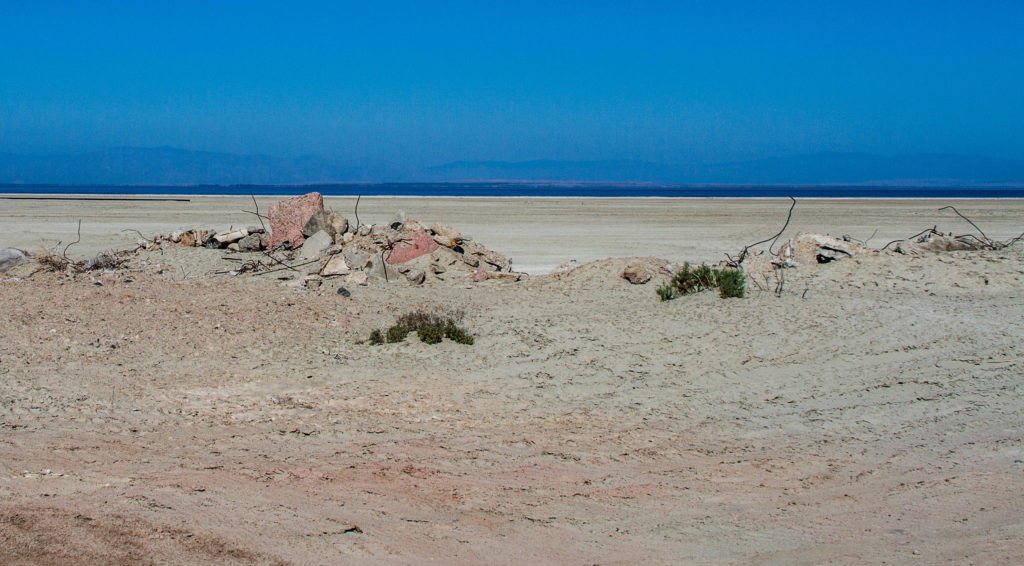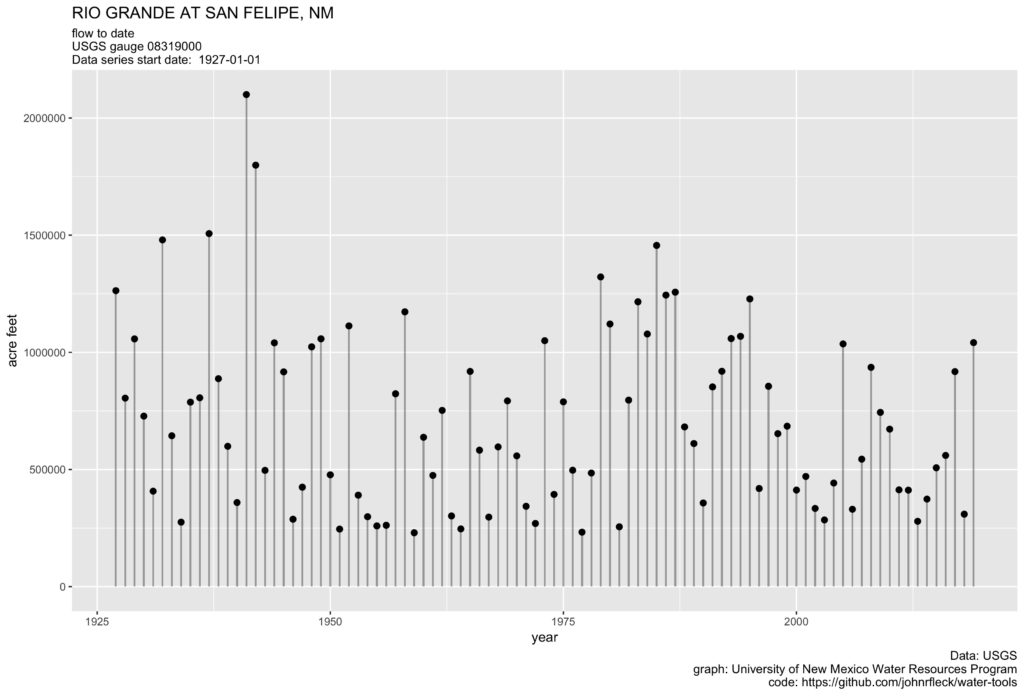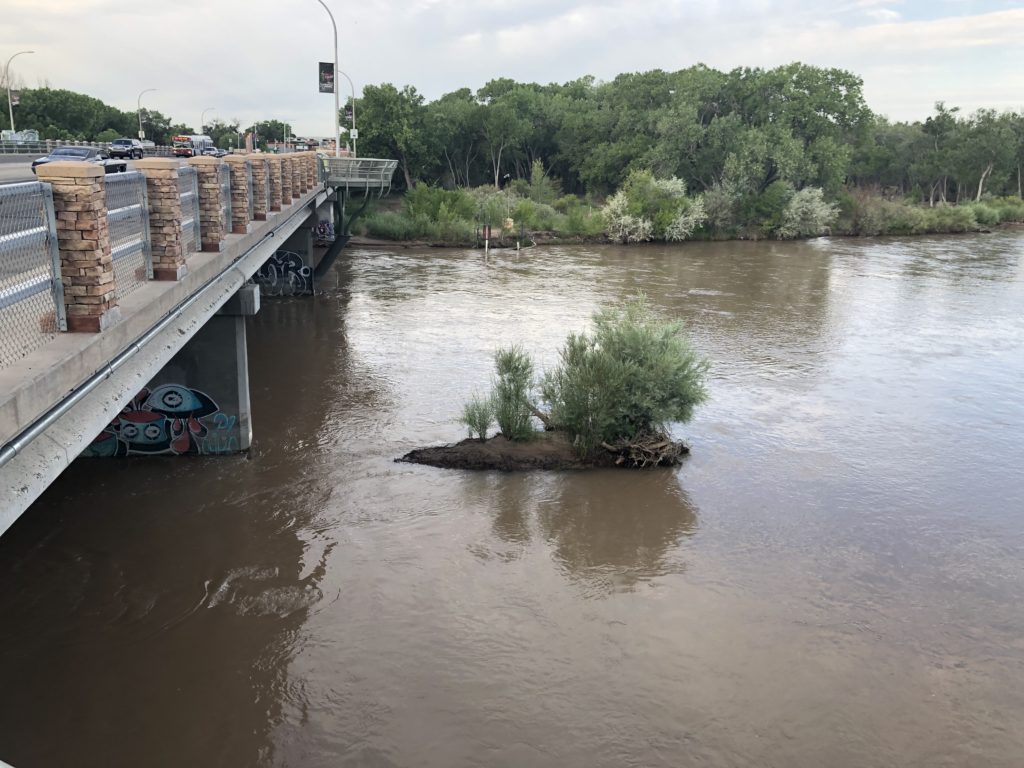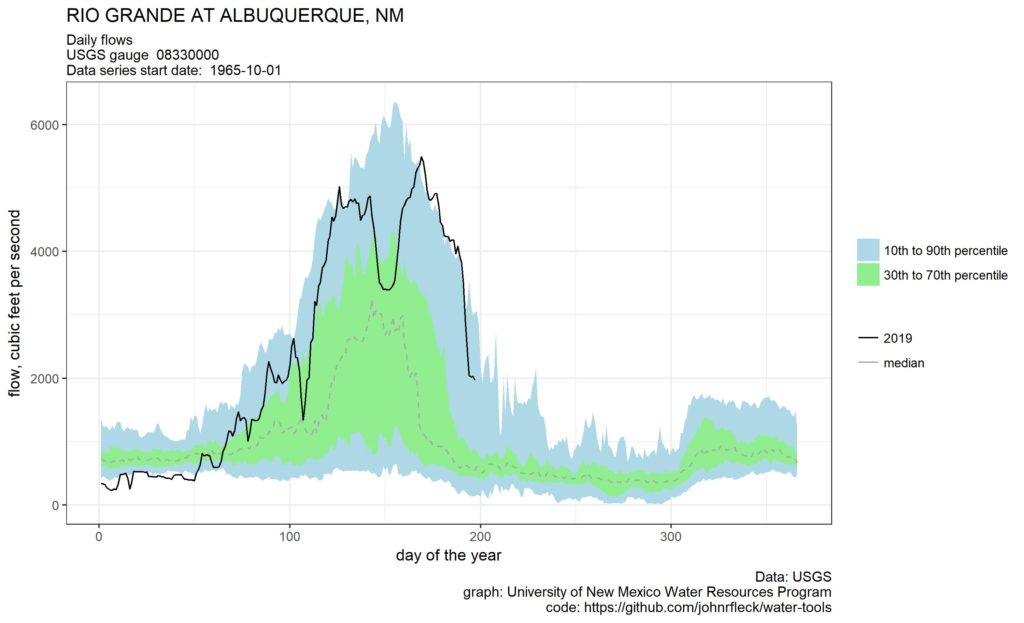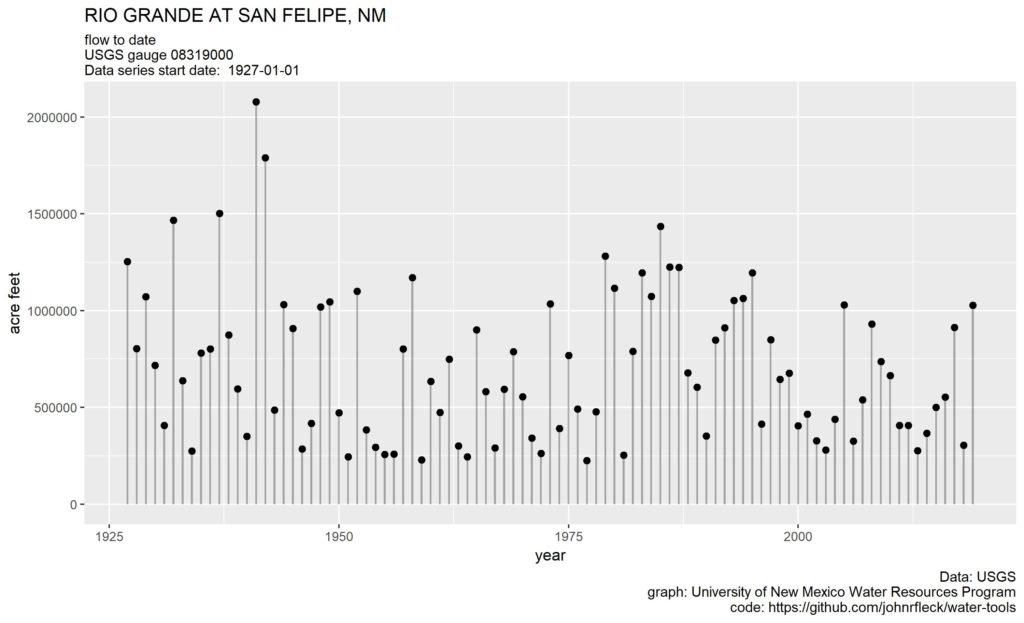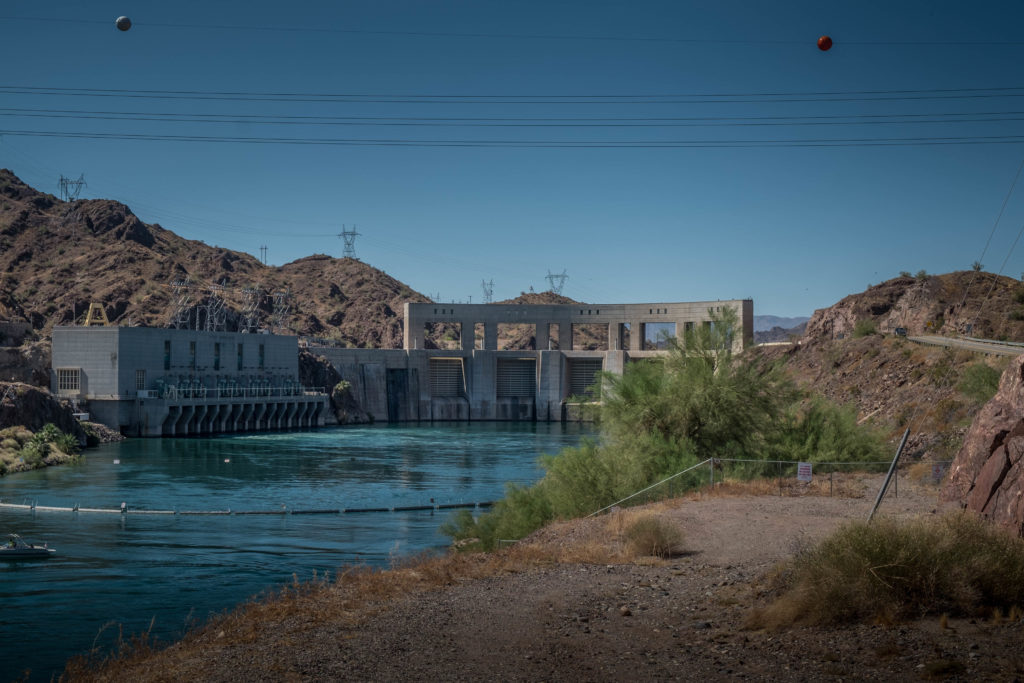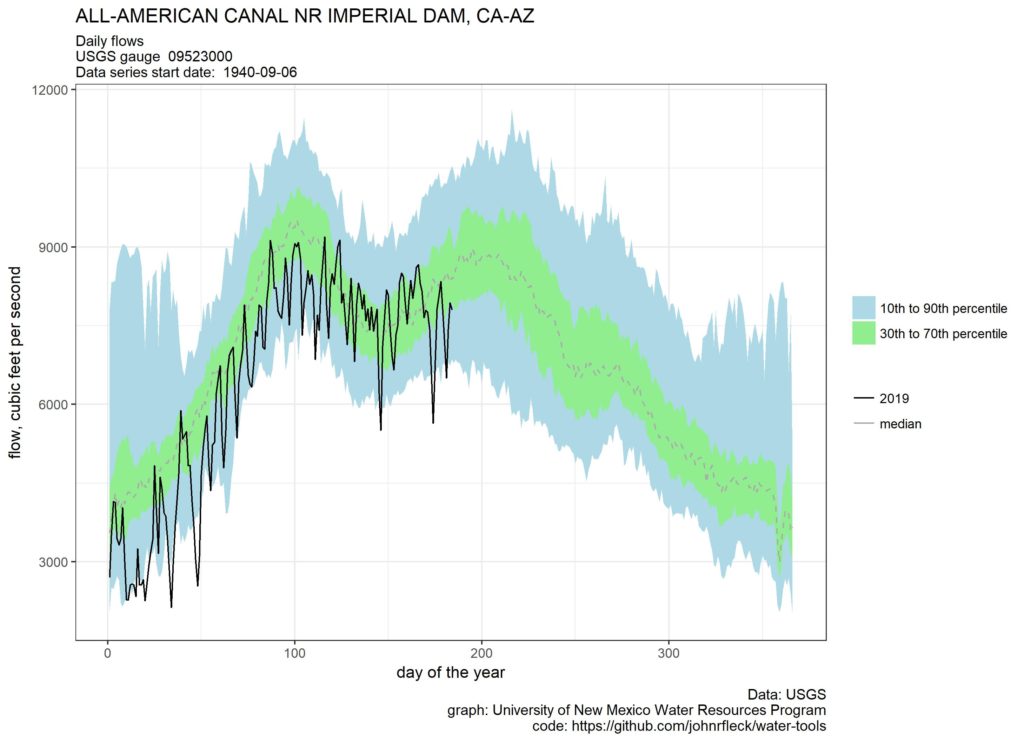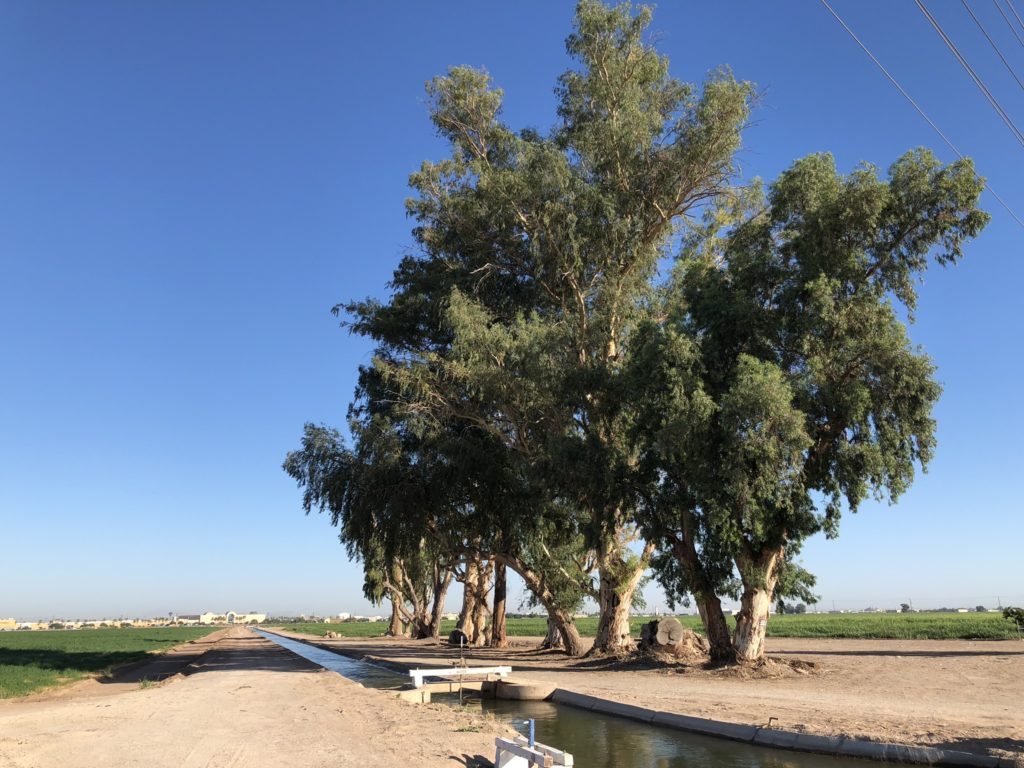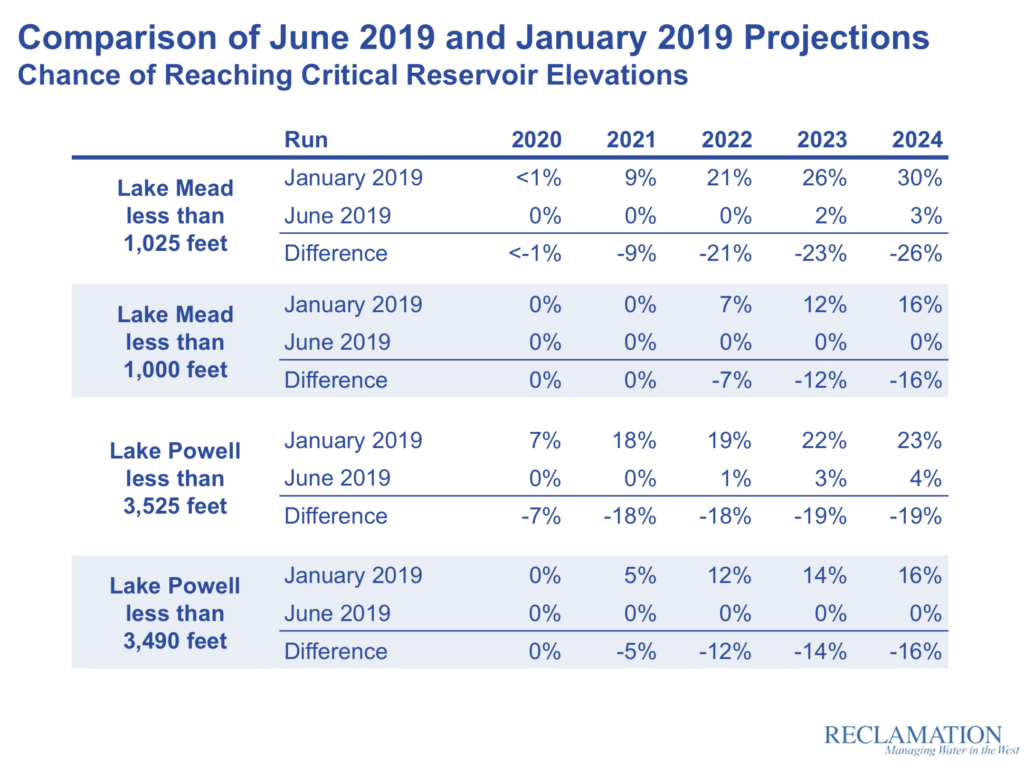tl;dr
- Folks in the Upper Colorado River Basin are only using ~60 percent of their Colorado River Compact allocation
- Use has been basically flat since 1990. It is not going up.
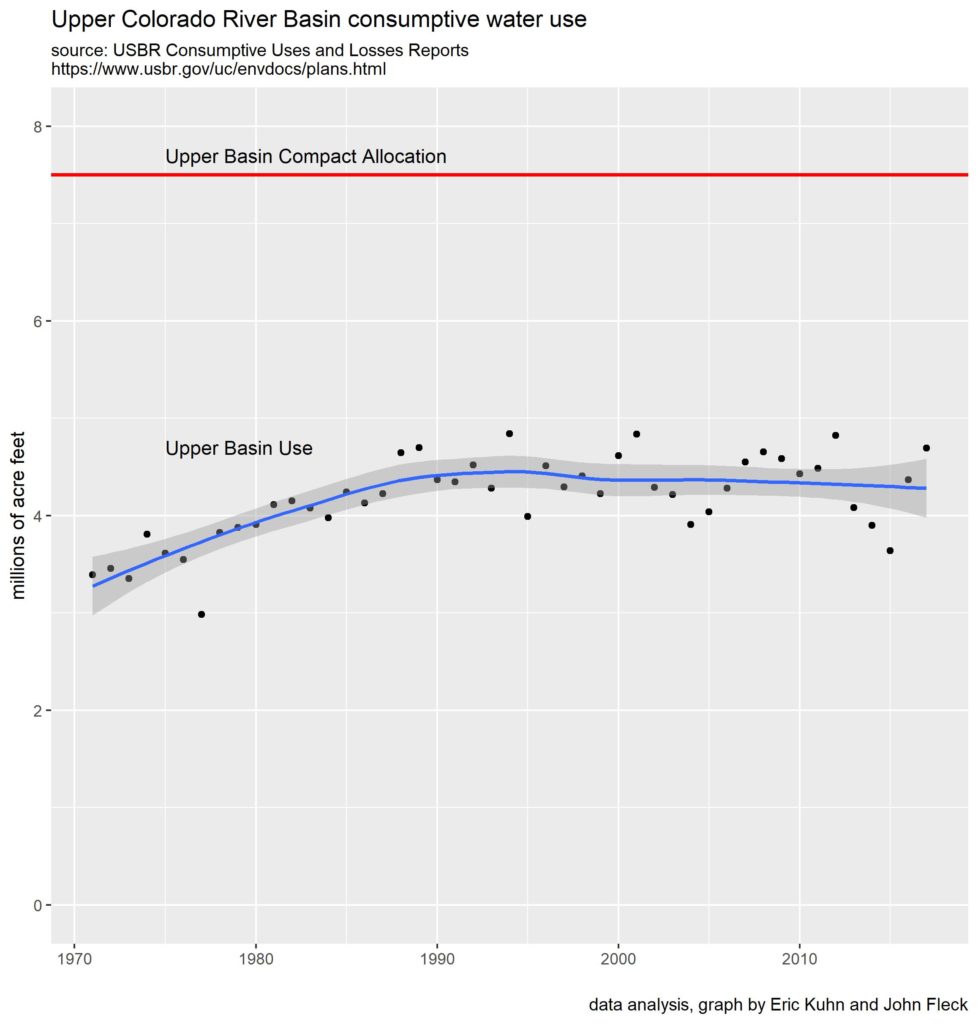
Upper Colorado River Basin use
A couple of weeks ago I got an email, with an attached spreadsheet, from my co-author Eric Kuhn. It was his distillation of data from the US Bureau of Reclamation’s Consumptive Uses and Losses Reports:
There are just no real trends in UB CU since 1988. A slight downward trend in over UB CU primarily because CRSP has been going down. No trend in UB exports or in-basin ag use.
Two days later, he sent an updated version, taking the main part of the dataset back to 1971.
Those who have worked with Eric will no doubt recognize two important characteristics – brevity, and data. (Re brevity: by “CRSP” here, he means evaporation from the Colorado River Storage Project reservoirs). After three years collaborating with Eric on a book about Colorado River data – what did we know, and when did we know it, about how much water the river has? – I’ve come to treasure Eric’s spreadsheets.
This latest one landed in my inbox as I was focused on a Lower Basin scouting trip, visiting the farms and water districts of the California deserts that use a big share of the Colorado River’s water. Folks in the Colorado River management community, myself included, tend to focus a huge share of our attention on the Lower Basin, where overuse has led to emptying reservoirs.
Eric’s spreadsheet, and our discussions surrounding the data it contains, pulled my focus back upstream, to an important and under-discussed piece of the Colorado River story. While the Lower Basin is unquestionably overusing water, the Upper Basin is underusing.
Overuse is an attention-getter. Underuse, not so much.
As we negotiate a complex future under the strains of population growth and a climate-change-shrunk river, we need to keep this bit of data close to hand.

